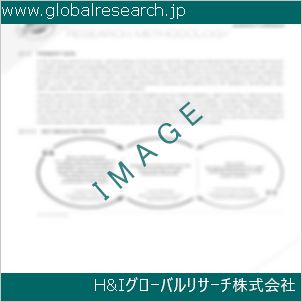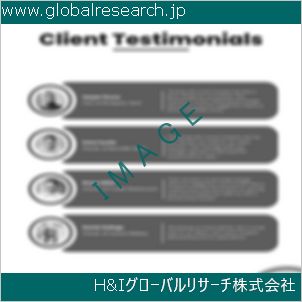1 Report Overview
1.1 Study Scope
1.2 Market Analysis by Type
1.2.1 Global Implants for Sleep Apnea Market Size Growth Rate by Type: 2018 VS 2022 VS 2029
1.2.2 Hypoglossal Neurostimulation Devices
1.2.3 Palatal Implants
1.2.4 Bone Screw System
1.2.5 Phrenic Nerve Stimulator
1.3 Market by Application
1.3.1 Global Implants for Sleep Apnea Market Growth by Application: 2018 VS 2022 VS 2029
1.3.2 Central Sleep Apnea
1.3.3 Obstructive Sleep Apnea
1.4 Study Objectives
1.5 Years Considered
1.6 Years Considered
2 Global Growth Trends
2.1 Global Implants for Sleep Apnea Market Perspective (2018-2029)
2.2 Implants for Sleep Apnea Growth Trends by Region
2.2.1 Global Implants for Sleep Apnea Market Size by Region: 2018 VS 2022 VS 2029
2.2.2 Implants for Sleep Apnea Historic Market Size by Region (2018-2023)
2.2.3 Implants for Sleep Apnea Forecasted Market Size by Region (2024-2029)
2.3 Implants for Sleep Apnea Market Dynamics
2.3.1 Implants for Sleep Apnea Industry Trends
2.3.2 Implants for Sleep Apnea Market Drivers
2.3.3 Implants for Sleep Apnea Market Challenges
2.3.4 Implants for Sleep Apnea Market Restraints
3 Competition Landscape by Key Players
3.1 Global Top Implants for Sleep Apnea Players by Revenue
3.1.1 Global Top Implants for Sleep Apnea Players by Revenue (2018-2023)
3.1.2 Global Implants for Sleep Apnea Revenue Market Share by Players (2018-2023)
3.2 Global Implants for Sleep Apnea Market Share by Company Type (Tier 1, Tier 2, and Tier 3)
3.3 Players Covered: Ranking by Implants for Sleep Apnea Revenue
3.4 Global Implants for Sleep Apnea Market Concentration Ratio
3.4.1 Global Implants for Sleep Apnea Market Concentration Ratio (CR5 and HHI)
3.4.2 Global Top 10 and Top 5 Companies by Implants for Sleep Apnea Revenue in 2022
3.5 Implants for Sleep Apnea Key Players Head office and Area Served
3.6 Key Players Implants for Sleep Apnea Product Solution and Service
3.7 Date of Enter into Implants for Sleep Apnea Market
3.8 Mergers & Acquisitions, Expansion Plans
4 Implants for Sleep Apnea Breakdown Data by Type
4.1 Global Implants for Sleep Apnea Historic Market Size by Type (2018-2023)
4.2 Global Implants for Sleep Apnea Forecasted Market Size by Type (2024-2029)
5 Implants for Sleep Apnea Breakdown Data by Application
5.1 Global Implants for Sleep Apnea Historic Market Size by Application (2018-2023)
5.2 Global Implants for Sleep Apnea Forecasted Market Size by Application (2024-2029)
6 North America
6.1 North America Implants for Sleep Apnea Market Size (2018-2029)
6.2 North America Implants for Sleep Apnea Market Growth Rate by Country: 2018 VS 2022 VS 2029
6.3 North America Implants for Sleep Apnea Market Size by Country (2018-2023)
6.4 North America Implants for Sleep Apnea Market Size by Country (2024-2029)
6.5 United States
6.6 Canada
7 Europe
7.1 Europe Implants for Sleep Apnea Market Size (2018-2029)
7.2 Europe Implants for Sleep Apnea Market Growth Rate by Country: 2018 VS 2022 VS 2029
7.3 Europe Implants for Sleep Apnea Market Size by Country (2018-2023)
7.4 Europe Implants for Sleep Apnea Market Size by Country (2024-2029)
7.5 Germany
7.6 France
7.7 U.K.
7.8 Italy
7.9 Russia
7.10 Nordic Countries
8 Asia-Pacific
8.1 Asia-Pacific Implants for Sleep Apnea Market Size (2018-2029)
8.2 Asia-Pacific Implants for Sleep Apnea Market Growth Rate by Region: 2018 VS 2022 VS 2029
8.3 Asia-Pacific Implants for Sleep Apnea Market Size by Region (2018-2023)
8.4 Asia-Pacific Implants for Sleep Apnea Market Size by Region (2024-2029)
8.5 China
8.6 Japan
8.7 South Korea
8.8 Southeast Asia
8.9 India
8.10 Australia
9 Latin America
9.1 Latin America Implants for Sleep Apnea Market Size (2018-2029)
9.2 Latin America Implants for Sleep Apnea Market Growth Rate by Country: 2018 VS 2022 VS 2029
9.3 Latin America Implants for Sleep Apnea Market Size by Country (2018-2023)
9.4 Latin America Implants for Sleep Apnea Market Size by Country (2024-2029)
9.5 Mexico
9.6 Brazil
10 Middle East & Africa
10.1 Middle East & Africa Implants for Sleep Apnea Market Size (2018-2029)
10.2 Middle East & Africa Implants for Sleep Apnea Market Growth Rate by Country: 2018 VS 2022 VS 2029
10.3 Middle East & Africa Implants for Sleep Apnea Market Size by Country (2018-2023)
10.4 Middle East & Africa Implants for Sleep Apnea Market Size by Country (2024-2029)
10.5 Turkey
10.6 Saudi Arabia
10.7 UAE
11 Key Players Profiles
11.1 Inspire Medical Systems
11.1.1 Inspire Medical Systems Company Detail
11.1.2 Inspire Medical Systems Business Overview
11.1.3 Inspire Medical Systems Implants for Sleep Apnea Introduction
11.1.4 Inspire Medical Systems Revenue in Implants for Sleep Apnea Business (2018-2023)
11.1.5 Inspire Medical Systems Recent Development
11.2 Medtronic
11.2.1 Medtronic Company Detail
11.2.2 Medtronic Business Overview
11.2.3 Medtronic Implants for Sleep Apnea Introduction
11.2.4 Medtronic Revenue in Implants for Sleep Apnea Business (2018-2023)
11.2.5 Medtronic Recent Development
11.3 Nyxoah
11.3.1 Nyxoah Company Detail
11.3.2 Nyxoah Business Overview
11.3.3 Nyxoah Implants for Sleep Apnea Introduction
11.3.4 Nyxoah Revenue in Implants for Sleep Apnea Business (2018-2023)
11.3.5 Nyxoah Recent Development
11.4 Siesta Medical
11.4.1 Siesta Medical Company Detail
11.4.2 Siesta Medical Business Overview
11.4.3 Siesta Medical Implants for Sleep Apnea Introduction
11.4.4 Siesta Medical Revenue in Implants for Sleep Apnea Business (2018-2023)
11.4.5 Siesta Medical Recent Development
11.5 LivaNova
11.5.1 LivaNova Company Detail
11.5.2 LivaNova Business Overview
11.5.3 LivaNova Implants for Sleep Apnea Introduction
11.5.4 LivaNova Revenue in Implants for Sleep Apnea Business (2018-2023)
11.5.5 LivaNova Recent Development
11.6 Respicardia, Inc. (Asahi Kasei Company)
11.6.1 Respicardia, Inc. (Asahi Kasei Company) Company Detail
11.6.2 Respicardia, Inc. (Asahi Kasei Company) Business Overview
11.6.3 Respicardia, Inc. (Asahi Kasei Company) Implants for Sleep Apnea Introduction
11.6.4 Respicardia, Inc. (Asahi Kasei Company) Revenue in Implants for Sleep Apnea Business (2018-2023)
11.6.5 Respicardia, Inc. (Asahi Kasei Company) Recent Development
11.7 LinguaFlex
11.7.1 LinguaFlex Company Detail
11.7.2 LinguaFlex Business Overview
11.7.3 LinguaFlex Implants for Sleep Apnea Introduction
11.7.4 LinguaFlex Revenue in Implants for Sleep Apnea Business (2018-2023)
11.7.5 LinguaFlex Recent Development
11.8 GE
11.8.1 GE Company Detail
11.8.2 GE Business Overview
11.8.3 GE Implants for Sleep Apnea Introduction
11.8.4 GE Revenue in Implants for Sleep Apnea Business (2018-2023)
11.8.5 GE Recent Development
11.9 Nihon Kohden
11.9.1 Nihon Kohden Company Detail
11.9.2 Nihon Kohden Business Overview
11.9.3 Nihon Kohden Implants for Sleep Apnea Introduction
11.9.4 Nihon Kohden Revenue in Implants for Sleep Apnea Business (2018-2023)
11.9.5 Nihon Kohden Recent Development
11.10 Fisher & Paykel Healthcare
11.10.1 Fisher & Paykel Healthcare Company Detail
11.10.2 Fisher & Paykel Healthcare Business Overview
11.10.3 Fisher & Paykel Healthcare Implants for Sleep Apnea Introduction
11.10.4 Fisher & Paykel Healthcare Revenue in Implants for Sleep Apnea Business (2018-2023)
11.10.5 Fisher & Paykel Healthcare Recent Development
11.11 Invacare
11.11.1 Invacare Company Detail
11.11.2 Invacare Business Overview
11.11.3 Invacare Implants for Sleep Apnea Introduction
11.11.4 Invacare Revenue in Implants for Sleep Apnea Business (2018-2023)
11.11.5 Invacare Recent Development
11.12 Phillips
11.12.1 Phillips Company Detail
11.12.2 Phillips Business Overview
11.12.3 Phillips Implants for Sleep Apnea Introduction
11.12.4 Phillips Revenue in Implants for Sleep Apnea Business (2018-2023)
11.12.5 Phillips Recent Development
12 Analyst’s Viewpoints/Conclusions
13 Appendix
13.1 Research Methodology
13.1.1 Methodology/Research Approach
13.1.2 Data Source
13.2 Disclaimer
13.3 Author Details
| ※参考情報 睡眠時無呼吸症候群(Sleep Apnea Syndrome)は、睡眠中に呼吸が何度も止まることによって、睡眠の質が悪化し、昼間の眠気や集中力の低下、さらには心血管系の疾患や糖尿病といった健康への悪影響を及ぼす病態です。この疾患は主に二つのタイプに分けられ、一つは「閉塞性睡眠時無呼吸症候群( obstructive sleep apnea, OSA)」であり、もう一つは「中枢性睡眠時無呼吸症候群(central sleep apnea, CSA)」です。OSAは、喉の筋肉がリラックスすることで気道が閉塞することが原因であり、CSAは脳が呼吸を調節する信号を適切に送信しないことが原因で起こります。 近年、睡眠時無呼吸症候群に対する治療法の一つとしてインプラントが注目を集めています。これらのインプラントは、直接的に気道を開放することを目的として設計されており、患者個々の状態に応じた治療が可能となります。従来の治療法としては、持続陽圧呼吸療法(CPAP)が主流でしたが、インプラントはこれに代わる選択肢として期待されています。 インプラントの特徴としては、まず、手術によって体内に埋め込まれることで、外部からの装置に依存することなく、持続的な治療効果を発揮できる点が挙げられます。また、インプラントの設計は患者の解剖学的特性に基づいており、個別化された治療が施されます。これによって、従来のCPAP療法にありがちなコンプライアンスの問題も軽減される可能性があります。 インプラントの種類には、主に「舌根神経刺激装置(Hypoglossal Nerve Stimulation, HNS)」があります。これは、舌根を支配する神経を刺激することで、睡眠中に気道が閉塞しないように舌を持ち上げる働きをする装置です。HNSは一定の条件を満たす患者に対して適応され、通常、他の治療法が効果を示さなかった場合に選択されます。 また、最近では「口腔内デバイス(Oral Appliance)」の一種として、口腔内に装着するタイプのインプラントも開発されています。これらは、上下の顎の位置を調整することで気道を広げ、呼吸を改善します。このアプローチは、軽度から中程度の閉塞性睡眠時無呼吸症候群を抱える患者に特に有効です。 インプラントの用途については、主に睡眠時無呼吸症候群の治療に用いられますが、その効果の測定や患者の状態に応じた調整も重要です。定期的なフォローアップや評価が行われ、必要に応じてプログラムの変更が加えられます。さらに、インプラントは患者の生活の質を向上させるだけでなく、長期的な健康リスクの軽減にも寄与します。 関連技術には、睡眠時無呼吸症候群の診断と治療における最新の進展が含まれます。例えば、ポリソムノグラフィー(PSG)や自宅での睡眠検査など、睡眠の質を客観的に評価するためのツールは重要です。また、テレヘルスの導入も進んでおり、患者が自宅で治療を続けながら、専門医と連携を取りやすくなっています。これにより、インプラントの効果のモニタリングや必要な調整が容易になります。 さらに、バイオエンジニアリングの進展により、より精密で効果的なインプラントの開発が期待されています。これには、材料科学や微細加工技術が関与しており、将来的により小型化され、患者にとっての利便性が向上するでしょう。 インプラントによる睡眠時無呼吸症候群の治療は、新たな可能性を秘めており、患者の生活の質を劇的に改善することができる手段です。ただし、全ての患者に適用可能というわけではなく、適応症や禁忌の評価が不可欠です。そのため、専門の医師と密に連携し、適切な治療法を選択することが重要です。これにより、患者はより良い睡眠を獲得し、健康な生活を送ることができるでしょう。 |
❖ 免責事項 ❖
http://www.globalresearch.jp/disclaimer












